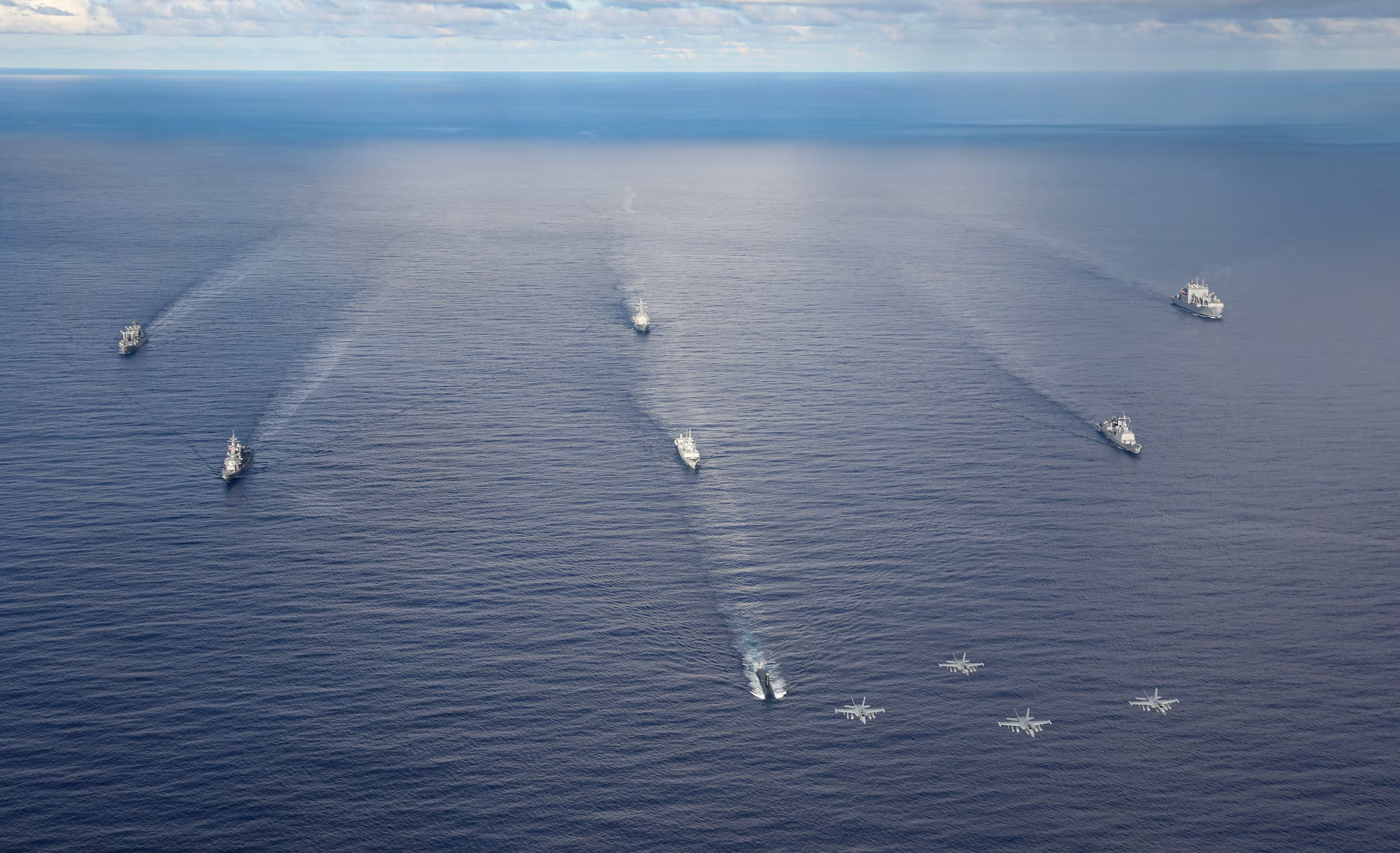
By Kris Osborn, President, Warrior
Live-fire operations, submarine hunting, island hopping and air warfare maneuvers are a few of the key multi-national war preparation activities now underway in the Philippine Sea. There is one key phrase which seems to resonate more than any other when considering a Canadian, Japanese, Korean and US Navy combined maritime warfare operation … networking. How fast and how efficiently can they share threat data, track enemy movements and, if necessary, launch coordinated multi-national, multi-domain attacks.
A key operational question with a multi-national show of Maritime warfare force in the Philippine Sea relates to the extent to which warships from the US Navy, Japan, Korea and Canada can all share information in real time across ocean areas throughout the Pacific, as that ability could great an ISR and kinetic firepower wall providing a protective envelope around both Taiwan and the Philippines.
As Chinese military threats to the Philippines and Japan continue to escalate with provocative maritime maneuvers and air space incursions, the US Navy is wasting little time with its multi-national Pacific Vanguard exercise. The show of force involves the Royal Canadian Navy, Japan Maritime Self-Defense Force, Republic of Korea Navy and U.S. Navy warships sail in formation in the Philippine Sea as EA-18G Growler aircraft assigned to U.S. Navy Electronic Attack Squadron.
It makes sense that an EW capable Growler would operate in the area as the aircraft could be in position to detect and electronic signature of an enemy radio or radar system. In the event of conflict, a platform such as the F/A-18G Growler would send out EW beams to confuse, jam or disable enemy air defenses and ground-fired weapons systems.
Connecting Japanese, Canadian, Korean and US Ships & Planes
The largest and most significant element of this exercise pertains to the extent to which datalinks, radar track loops, RF signals, GPS and other wireless networking technologies from each of the respective countries are able to quickly exchange information in real time. Apart from some simple radio frequencies, multi-national data sharing between drones, surface warships and aircraft can require complex interfaces. Sensors, radios, electronic signals and guidance systems from each respective country need to operate with the technical infrastructure and configuration needed to exchange data across different transport layers. Each mode of communication may operate with different standards or use different protocols, creating a circumstance wherein interfaces or gateways need to be engineered to ensure information from a Japanese fighter jet can, for example, reach Korean, US and Canadian warships.
Protect Taiwan and The Philippines
Should these kinds of datalinks and interfaces be established, perhaps through the use of gateways, a multi-national maritime and air formation across the Pacific could it seems succeed in setting up a defensive wall or perimeter protecting Taiwan. Should, for instance, a US Navy drone discover a Chinese submarine moving toward the Philippines with its Vertical Towed Array sonar, then perhaps it could instantly alert command and control assets on Japanese, Korean and Canadian ships and network threat details to aerial drones from all four countries. Should a Korean drone discover a launch of a Chinese anti-ship missile from beyond the radar horizon, it should be in position to quickly and instantly process threat data and transmit time sensitive information to other air and surface nodes to inform ship commanders of incoming threats.
A specific element of this is also that both Japan and the US are part of the Aegis Combat System radar family, meaning they can quickly exchange ballistic missile threat information across wide swaths of ocean. Aegis Combat Systems are built with common software, sensors and radar systems such that they can quickly network track loop data on incoming threats. In the absence of this kind of connectivity, gateway systems could be useful. In this sense, it is possible that computing technology and common standards can be used to essentially “translate” incoming data from otherwise incompatible sensors.
Kris Osborn is the President of Warrior Maven – Center for Military Modernization. Osborn previously served at the Pentagon as a Highly Qualified Expert with the Office of the Assistant Secretary of the Army—Acquisition, Logistics & Technology. Osborn has also worked as an anchor and on-air military specialist at national TV networks. He has appeared as a guest military expert on Fox News, MSNBC, The Military Channel, and The History Channel. He also has a Masters Degree in Comparative Literature from Columbia University.

